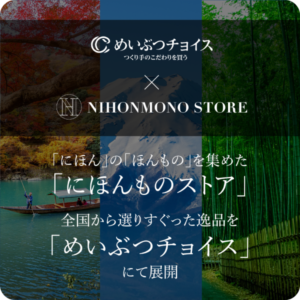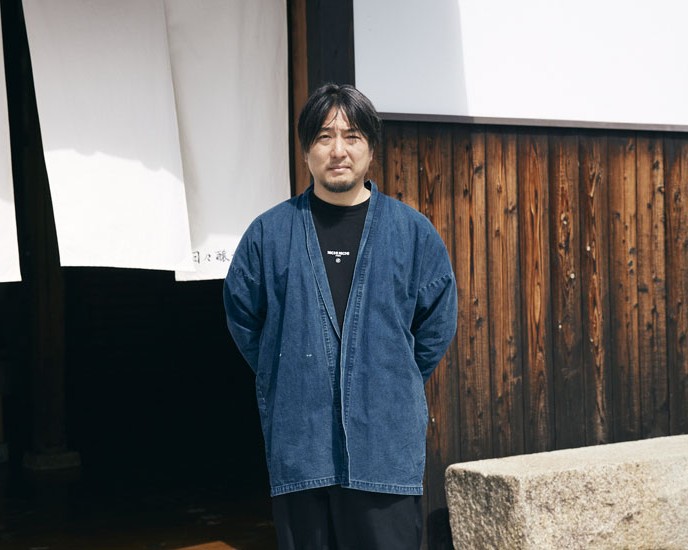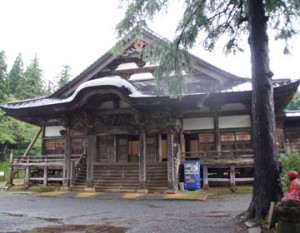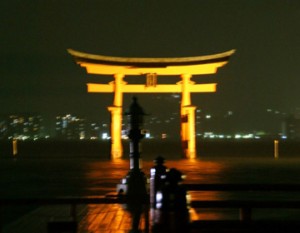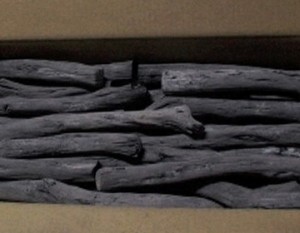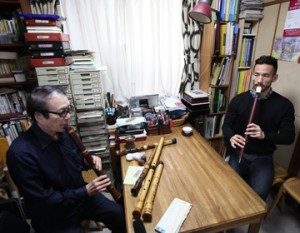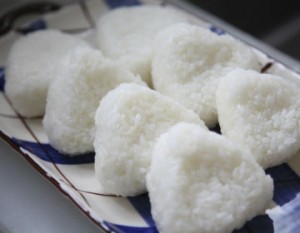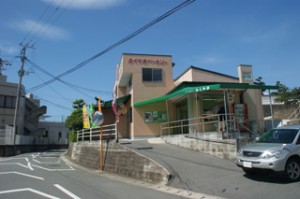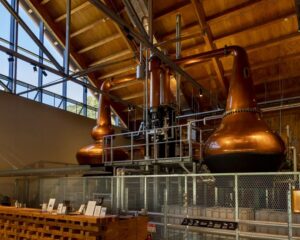A new challenge to bring a breath of fresh air to the sake industry has quietly begun in Kyoto. At the heart of this is Mr. Hideo Matsumoto, the representative of Hibi Brewing Co. Mr. Matsumoto was the toji (master brewer) at his family’s sake brewery, Matsumoto Shuzo, until 2020, but in order to make the sake he envisioned, he retired from this position together with his father, Yasuhiro, who was the head of the brewery, and established a new sake brewery.
Retirement, training as a warrior, and a new beginning

Hibi-jozo, which was established in 2021, is located in Fushimi, Kyoto. It is a small-scale sake brewery consisting of a renovated warehouse that used to store coal and a newly built brewery next to it. Despite its small size, it was completed in less than a year after Matsumoto retired from his previous job, so we can’t help but be impressed by the smoothness of the arrangements made to set up the new base, and also by Matsumoto’s strong passion and desire to make sake.
This desire is symbolized by the sake brewing pilgrimage that Mr. Matsumoto calls his “samurai training”. Soon after leaving his previous job, he was invited by five sake breweries that he considers to be his peers and with whom he is working to develop the sake industry, to participate in the brewing at each brewery in succession, and he brewed sake at each brewery while borrowing their facilities. Starting with Tomita Shuzo in Shiga Prefecture, he visited each brewery in turn, including Shiraito Shuzo in Fukuoka Prefecture, Hananoka Shuzo in Kumamoto Prefecture, Senkin in Tochigi Prefecture, and Shinsei Shuzo in Akita Prefecture, and by brewing sake there, he was able to gain a clearer understanding of the details of each brewery that he had not been able to see from the outside, such as the individual methods used to make the most of the local environment and climate, and the way in which the local water and rice are used to bring out the unique characteristics of the area, and he also gained new insights. Each of these five breweries has established its own originality in sake brewing, and the sake they brew is highly regarded throughout the country. This is why there was probably a lot to learn through the experience of working at these breweries.
A fusion of tradition and innovation
After completing his training, he returned to Kyoto and quickly began to realize the rough draft of the ideal brewery he had been imagining in his head. He completed the brewery in just three months.
In this new environment, Mr. Matsumoto is challenging himself to take the traditional Japanese sake brewing method of “kimoto-zukuri” to the next level, and to open up new possibilities for sake by adding the essence of the knowledge, insights and know-how he has cultivated up to this point.
This is linked to the “Shuhari” spirit that he has held since he first started making sake.
“Ultimately, sake making won’t be good unless you have a clear goal or destination in mind. That’s why I started by combining things that I thought made sense,” says Mr. Matsumoto. His words show his sincere attitude towards sake making.
It’s impossible to make sake without using the traditional kimoto method

The “Namamoto” brewing method that Mr. Matsumoto works with is a traditional method that sets itself apart from the mass-production style of sake brewing that developed after the Meiji era. This method uses natural lactic acid bacteria to slowly ferment at low temperatures, creating a unique flavor. Due to the time and effort involved, there are very few sake breweries that use the Namamoto method compared to the quick-fermenting method that allows for mass production.
However, Mr. Matsumoto asserts, “The sake that I want to make is impossible to make without using natural yeast starter. Furthermore, I think that it has to be natural yeast starter that surpasses natural yeast starter.” As he says, in general, natural yeast starter brewing is carried out at a temperature of 5-9℃, but in the daily brewing, fermentation is carried out at an astonishingly low temperature of 0.2℃.
This ultimate low-temperature fermentation has succeeded in producing a sake that has a rich flavor while keeping the alcohol content at around 11% in its original state.
This is much lower than normal sake, which is 17-20% in its original state and 13-16% when diluted.
Not one cup, but one bottle. Making a thin, delicious flavor

At the root of Mr. Matsumoto’s sake brewing is a spirit of inquiry: “What is the taste of good sake that people can continue to drink? The best answer to this question at the moment is ‘usuuma’. By reducing the alcohol content, he has arrived at a taste that combines ease of drinking with deliciousness, expressing a refreshing, watery texture while also allowing the umami of lactic acid fermentation to be felt in the depths of the palate. ”Two or three people can comfortably drink a bottle. When I imagined the scene of drinking sake in a restaurant, I didn’t have that kind of image yet. Sipping a small amount of sake from a beautiful sake cup is the standard for sake drinking nowadays. He says, “I’m not trying to pander to wine drinkers, but after all, it’s hard to drink a whole bottle if it’s too heavy, isn’t it? I want to make sake that people want to order by the bottle, not by the cup, and I want to make it a role model for that.” To achieve this, he is determined to pursue a “thin, delicious taste” that is just on the line of being too thin for some drinkers, by making sure to bring out the umami without relying on alcohol, aroma or sweetness. While it may seem like a niche approach to suppressing the aroma and sweetness that are the hallmarks of sake, he says he has no hesitation in pursuing this policy. He aims to create a taste that is so solid that people who drink it will be able to associate it with the taste of Matsumoto Hizuhiko, just like a wine from a famous wine-producing region.
Making the most of the characteristics of rice
Rice is an important factor in the taste of sake. Mr. Matsumoto believes that in order to pursue the ideal taste, it is also important to delve deeper into the approach to the ingredients. In daily brewing, he mainly uses Yamadanishiki, but he places particular importance on the region of production, and he uses Yamadanishiki from the Akitsu area and from the Yoneda village in Hyogo Prefecture, trying to reflect the individuality of each region in the taste.
In addition, he is also working on making sake using small amounts of sake rice from the region that the sake brewer he trained with uses. He says that he started this because he wanted to make sake from the rice he met during his training, and to express the individuality and excellence of the sake rice from all over Japan from his own perspective.
From this attitude, you can feel his deep respect and inquisitiveness towards rice and human relationships.
Technological innovation in sake brewing has come from the hands of

One thing that is particularly notable about Mr. Matsumoto’s sake brewing is that he avoids using machines as much as possible, and insists on doing everything by hand.
“When I built this brewery, I completely abandoned the idea of relying on machines to make sake. Nowadays, almost all of the processes are done by hand.” This policy has enabled more delicate and careful sake brewing in exchange for productivity and working hours.
Even the rice washing process is done by hand, without using a machine.
He says, “Using a rice washing machine isn’t a bad idea, but it washes the rice at the same power all the time. The condition of the rice changes every year, and it differs depending on the region and the person who makes it. These characteristics can only be felt by hand.”
This commitment to manual labor is not just to preserve tradition, but also a strategic choice to create higher quality sake.
Facing the challenges of the industry

In this way, the sake that encapsulated Matsumoto-san’s ideals was completed. He named it “Nichinichi”. The fact that it bears the name of his store shows Matsumoto-san’s confidence, but the price is in the 2,000 yen range, making it relatively easy to obtain for the time and effort that went into making it. As a reason for this, Mr. Matsumoto gives a specific figure, saying, “If we can make about 300 koku (about 55,000 liters* or about 76,000 bottles of 4-go bottles) of sake at 2,000 yen per bottle, we can feed our staff and pay off our debts.”
However, if we look at the sake industry as a whole, there are still many cases where the old distribution and pricing systems are being followed, and in order to break out of this situation, it is first necessary to reform the mindset of the market as a whole. For example, if sake costing around 3,000 yen per 720ml bottle could be consumed as everyday sake rather than as a gift or luxury item, it would be possible to protect not only the sake breweries, but also the sake rice farmers. For this reason, they believe that it is essential to produce sake that meets the needs of the market.
Perhaps because of this, Matsumoto-san’s quest for “sake that can be enjoyed over and over again” reveals not only his own company’s interests, but also a deep consideration for the sustainability of the sake industry as a whole, and a management philosophy that takes into account the healthy development of the industry as a whole.
Opening up new horizons for sake

Matsumoto’s sake brewing takes into account changes in the infrastructure of consumption that could become the new standard for sake. While following traditional Namamoto brewing methods, his pursuit of a flavor that meets the needs of modern consumers is one path that could open up the future of sake.
In addition, by sticking to manual labor, he pursues a quality and individuality that cannot be achieved through mass production, and this is in line with trends in other alcoholic beverage industries, such as the rise of craft beer and natural wine.

These things are possible thanks to Matsumoto-san’s innate sense. Even just looking at the brewery building, you can see that the old-fashioned image of a sake brewery has been swept away, with the turntable and sound system installed in the atrium on the second floor, and the tasting counter that looks like a coffee stand.
It is precisely because of Mr. Matsumoto’s challenge that we can feel the great potential for sake to evolve in line with modern food culture and lifestyles, rather than just being a traditional drink. It will be interesting to see how Mr. Matsumoto’s every move will affect the sake industry as a whole.
